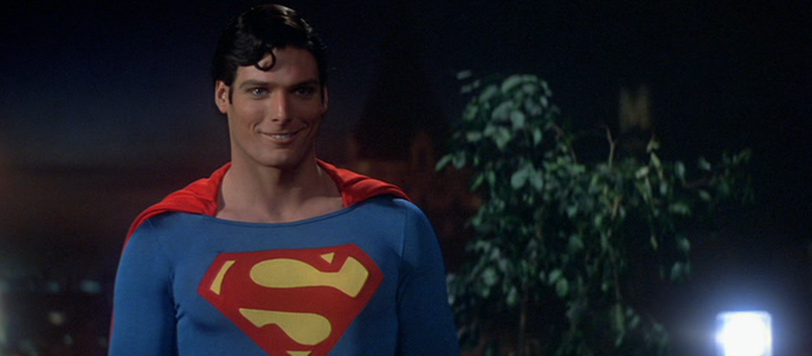
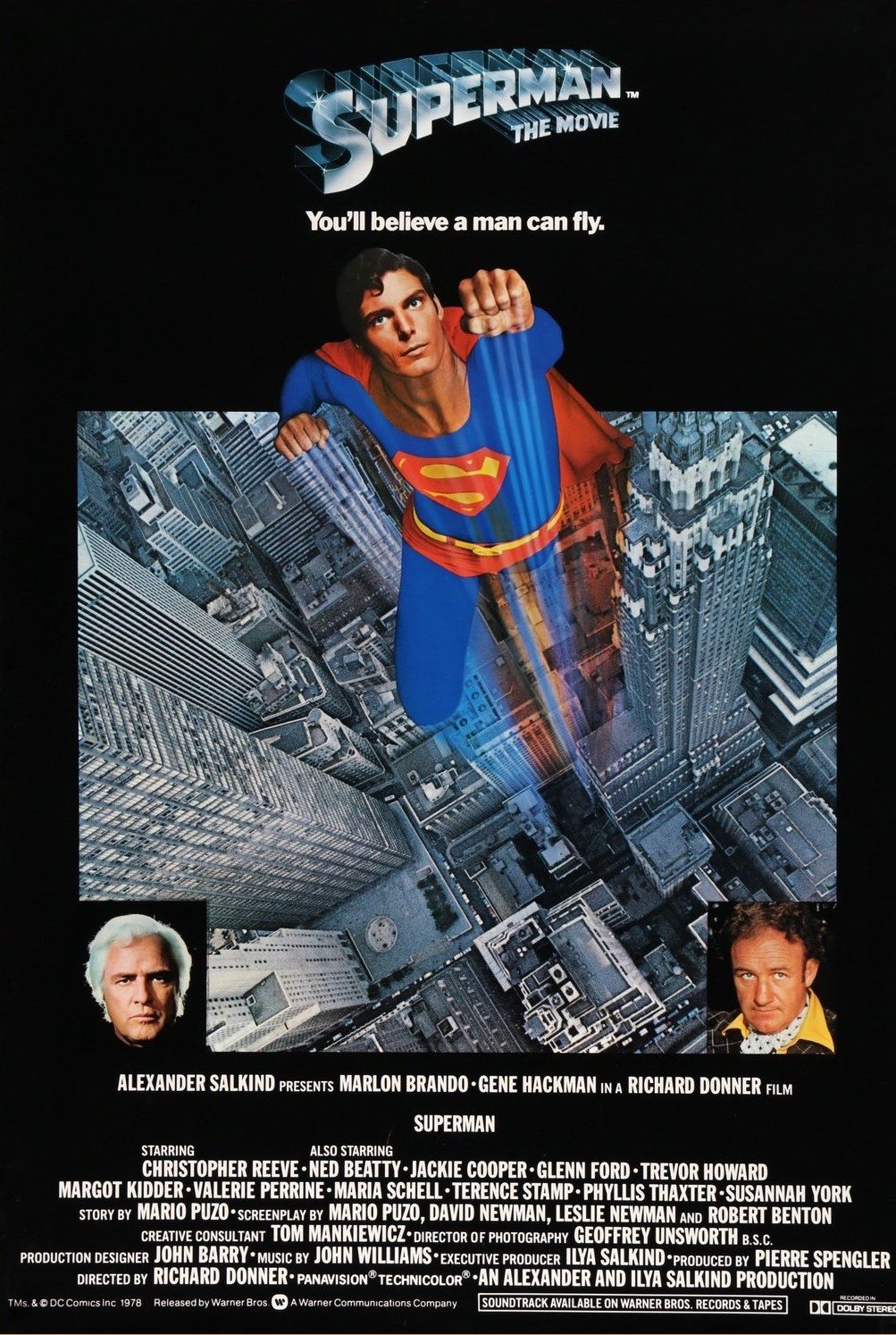
“Now listen to me, I tell you boys and girls, whichever one of you gets it out is going to wind up with the single most important interview since God talked to Moses!”
Superman is perhaps the most iconic superhero of all time, so it is logical to assume that Richard Donner’s Superman was a surefire home run that would make money even if it was terrible. But it’s easy to forget that in the 1970s superhero films were not as ubiquitous as they are in the early decades of the 21st century. Before Superman, adaptations of comic book heroes were limited to campy outings like Superman and the Mole Men (1951) and the Adam West Batman (1966), their associated television series, and several cheap made-for-television movies. Superman is campy enough that it can’t claim all of the credit for the modern superhero trend (Tim Burton’s Batman (1989) deserves a lot of credit too), but it is hard to imagine a world of cinema without the grandfather of the modern superhero genre. Though these early films of the superhero genre have a distinct camp flavor and feel quaint by modern standards, without them we might not have the Marvel Cinematic Universe, Batman Begins and The Dark Knight, X-Men, or Sam Raimi’s Spider-Man.
Due in part to the taint of the Batman television series, a big budget superhero film did not seem viable to Warner Bros. (which owns DC Comics), so they signed over the rights to Superman film and television adaptations to Ilya and Alexander Salkind, granting them those rights for twenty-five years! As further proof of their disbelief in the future of superhero films, included in the contract was “access to any character that had appeared in a comic book with Superman.” In theory, that could have meant a late-70s Justice League film or the inclusion of Batman and Wonder Woman. Instead, the first film functions mostly as an origin story of the Man of Steel. In fact, Superman doesn’t appear in costume until about halfway through it.
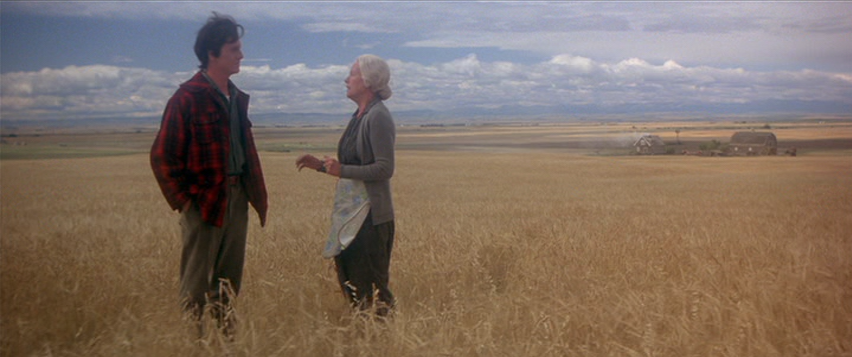
Several big names were in consideration to star,1 but the role of Clark Kent/Superman ultimately went to relative newcomer Christopher Reeve, who went through several months of intense training to bulk up his slim figure. As early as 1975, Gene Hackman was under contract to portray Lex Luthor and Marlon Brando was signed on to portray Superman’s father, Jor-El.2 Screenwriter Mario Puzo had seen his status rise tremendously after adapting his own novel into the screenplay for Francis Ford Coppola’s The Godfather (1972) and The Godfather Part II (1974). Based on the guidance from the Salkinds, Puzo turned in a 500 page combined draft for Superman and Superman II.
What appears on screen, while dated so many decades later, is creative within its formulaic structure. Despite following the general arc of an origin story paired with a first clash with the main villain, the film makes room for some tender moments and trivial excursions that give the film a certain charm. So while we have grand set designs3 and Superman flying around saving the day, we also see Kal-El communing with the consciousness of his long-dead father, and Lois Lane (Margot Kidder) ad-libbing a poem in her head as she flies with Superman for the first time. The situational encounters throughout the film are often contrived and silly—e.g. Superman coming to the aid of Air Force One, or using his own body to fill in for a broken section of railroad track—but these moments are always presented tongue-in-cheek.
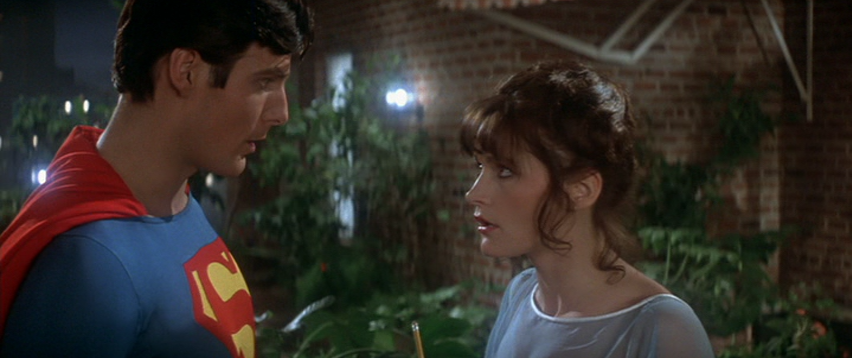
Christopher Reeve does a fantastic job of separating the ineffectual and bumbling Clark Kent from the confident and masculine Superman, and always knows when to play a scene with an implied wink to the audience. His depiction of Kent is of particular delight, with his speech characterized by a smattering of uhs and ums. Of course, it’s impossible to believe that Lois doesn’t recognize him. The two work side by side at the Daily Planet, but when she scores an interview with Superman, she falls in love with him without considering that he is just Clark without his glasses (maybe the fact that he was wearing his underwear outside of his pants threw her off). Margot Kidder, who had seen limited success in her career up to that point (most notable is her dual-role as both twins in Brian De Palma’s Sisters), is perfect as Lois Lane. The highlights of Kidder’s performance are the small moments of throwaway dialogue, facial expressions, and reactions to Superman and Clark. She and Reeve’s onscreen chemistry is great and their conversations are as engaging as any of the action sequences.
The opening sequence is entirely too long, and Reeve doesn’t even get on the screen (as either character) until well into the film. The film begins with a child reading a comic book detailing the origins of Superman, and once we enter into the film’s world, there is a confrontation between Jor-El (Brando) and a group of traitors led by General Zod (Terence Stamp). The treasonous trio feature more heavily in Superman II (remember that Puzo submitted a combined draft for the two films). Without a general concept of Superman lore, one might be lost as they watch Jor-El and Lara (Susannah York) bid their infant son farewell and send him on a starship to earth. After crash landing, Kal-El is discovered by Ma (Phyllis Thaxter) and Pa Kent (Glenn Ford), and we are treated to a few scenes featuring an adolescent Clark Kent (Jeff East) in order to give some weight to the adoptive father’s death.
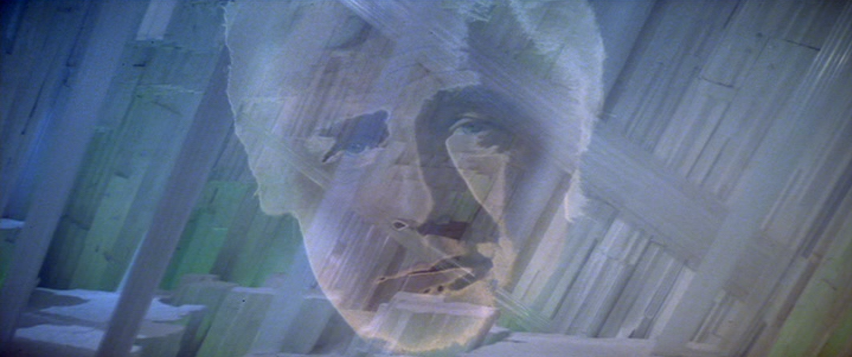
Clark is mysteriously drawn to the arctic by a glowing green crystal, and there his ice fortress is constructed by the crystal. It also produces memory crystals which allow Kal-El to speak to his father, in a scene featuring the disembodied head of Marlon Brando, strangely a stylistic predecessor of Brando’s monologue in Apocalypse Now.4 Following an implied twelve year isolation in which he learns from Jor-El, we are finally presented with a costumed Superman, and Reeve’s first appearance on the screen. Though I’m not super familiar with the plethora of comic book depictions of the hero, it appears that this film rendition is in large part responsible for the continued portrayal of Superman as a messianic figure, sent on a mission to earth by his father. He raises people from the dead, and is prompted to help humanity based on his father’s words: “They can be a great people, Kal-El, they wish to be. They only lack the light to show the way. For this reason, above all, their capacity for good, I have sent them you, my only son.”
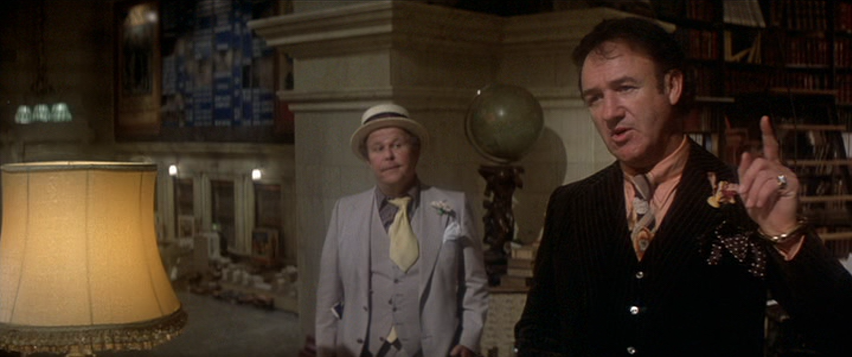
The conflict with Lex Luthor (Hackman) is silly and skips a lot of crucial details. Supported by bumbling Otis (Ned Beatty) and girlfriend Miss Teschmacher (Valerie Perrine), Luthor, the self-proclaimed great criminal mind of our time, lures Superman to his lair where he comes into contact with Kryptonite. But the only reason he has a bone to pick with Superman is because he sees him repeatedly saving the day and predicts that he will foil Luthor’s brilliant plan; which is to recalibrate a nuclear missile launch test to hit a fault line in California, which will sink a large portion of the state into the sea and skyrocket the value of all the land that Luthor has bought up further inland. I get that a certain amount of cheese has to be present for this to work well, but it’s a shame that the plot couldn’t have been elevated a bit higher than it was.
Superman is endearing, campy without overdoing it, and even innovative.5 Along with Star Wars and Close Encounters of the Third Kind, it helped usher in an era in which sci-fi and fantasy were treated with some respect in Hollywood and by ticket buyers (of course, it was likely treated with respect in Hollywood because of the ticket buyers). Lots of fun, and it holds up pretty well for an action movie that is four decades old.
1. Paul Newman reportedly turned down all three lead roles (Jor-El, Superman, and Lex Luthor) and nearly “had a heart attack” when he found out that Brando made $19 million for less than two weeks of shooting.
2. Salkind tells an interesting story in which, upon meeting with Brando, the star was intensely interested in voicing a version of Jor-El that was in fact a green bagel. Salkind, who was in his twenties at the time, found himself panicking and giving into the odd demand and fearing that he was ruining the movie by doing so. It was Richard Donner who stepped in and was able to convince Brando that people wanted to see him playing Jor-El, not a green bagel.
3. The sets of Krypton and the Fortress of Solitude in particular look very good and appear to have been done with mostly practical effects.
4. I think Brando’s scenes for Apocalypse Now were filmed before those for Superman, but the latter was released first.
5. Depicting a man flying was not a routine task in the mid 1970s, and even though it looks dated by today’s standards, it is almost endearing rather than unsightly.
Sources:
Barry Freiman. “One-on-One Interview with Producer Ilya Salkind”. Superman Homepage.
You Will Believe: The Cinematic Saga of Superman. Warner Home Video. 2006.
Taking Flight: The Development of Superman. Warner Home Video. 2001.